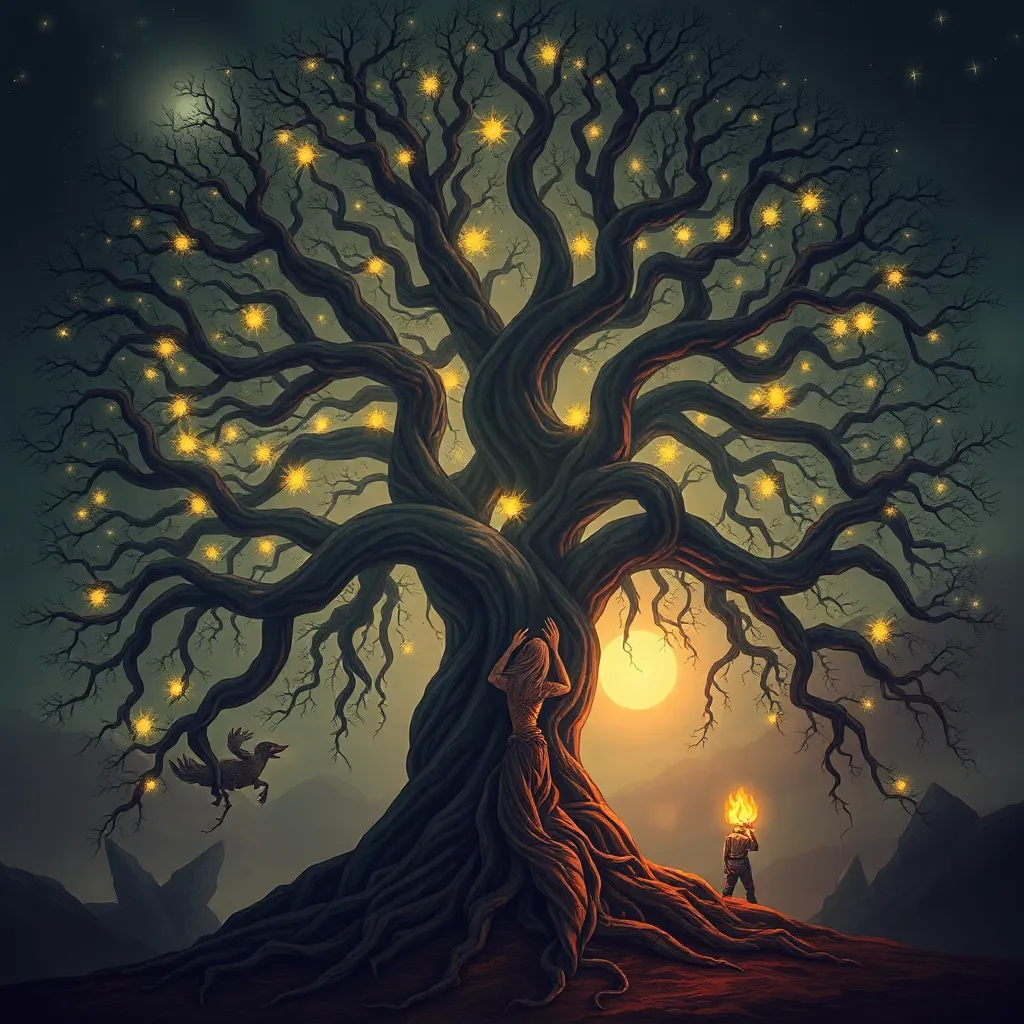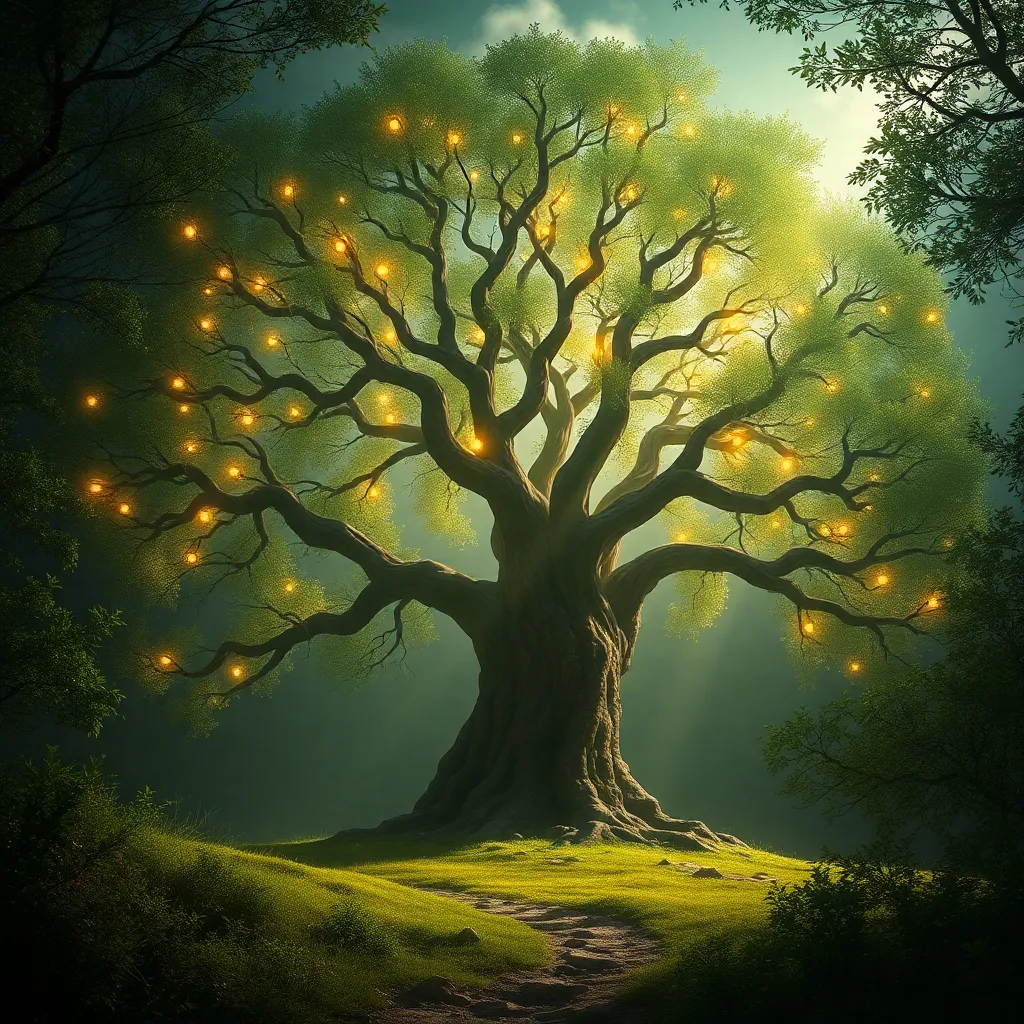The Wendigo’s Cultural Impact: Exploring the Wendigo’s Role in Indigenous Art, Music, and Dance
I. Introduction
The Wendigo is a prominent figure in Indigenous folklore, particularly among the Algonquian-speaking peoples of North America. Often depicted as a monstrous, cannibalistic spirit, the Wendigo embodies themes of greed, hunger, and moral transgression. Its chilling narrative serves not only as a cautionary tale but also as a reflection of the values and beliefs intrinsic to various Indigenous cultures.
This article aims to explore the Wendigo’s profound influence on Indigenous art, music, and dance. By examining its historical context and cultural significance, we can gain insight into how this mythological figure continues to resonate within Indigenous communities, shaping their artistic expressions and cultural practices.
II. Historical Context of the Wendigo Legend
The origins of the Wendigo legend can be traced across numerous Indigenous tribes, each presenting unique variations of the myth. For example, the Ojibwe speak of the Wendigo as a spirit that was once human but transformed into a creature driven by insatiable hunger. In contrast, the Cree people may describe it as a malevolent being that preys on the weak and vulnerable.
At its core, the Wendigo symbolizes themes of hunger and greed, serving as a moral lesson about the dangers of excess and the consequences of abandoning communal values. The oral tradition has played a crucial role in preserving the Wendigo narrative, with stories passed down through generations, often told during winter months when the themes of survival and community resonate most strongly.
III. The Wendigo in Indigenous Art
The Wendigo has been a source of inspiration for many Indigenous artists, manifesting in various traditional art forms. Visual representations often depict the Wendigo as a skeletal figure, embodying both horror and a cautionary presence. Artists utilize materials ranging from traditional wood carvings to modern mixed media to convey the Wendigo’s haunting essence.
Contemporary Indigenous artists are also reinterpreting the Wendigo in their work, bridging the gap between traditional narratives and modern themes. For instance:
- Some artists explore identity and cultural resilience, using the Wendigo as a metaphor for the struggles faced by Indigenous communities.
- Others may integrate the Wendigo into larger socio-political discussions, highlighting issues such as environmental degradation and cultural survival.
The impact of the Wendigo on themes of identity is profound, as it challenges artists to confront the complexities of their cultural heritage while fostering a sense of pride and continuity.
IV. The Wendigo’s Influence on Music
Musical traditions related to the Wendigo mythology are rich and varied. Traditional songs and chants often serve as storytelling tools, recounting the Wendigo’s fearsome tales and the moral lessons they impart. These songs are typically performed during community gatherings, rituals, and storytelling sessions, reinforcing the collective memory and cultural significance of the Wendigo.
In recent years, modern musical adaptations have emerged, reflecting contemporary Indigenous experiences while maintaining ties to traditional narratives. Artists incorporate elements of traditional music with contemporary genres, creating a fusion that resonates with younger audiences while preserving cultural integrity. The cultural significance of these musical adaptations includes:
- Fostering a sense of community and belonging.
- Encouraging dialogue around Indigenous identity and experiences.
- Providing a platform for storytelling that honors ancestral traditions.
Music plays a vital role in the storytelling and rituals surrounding the Wendigo, serving as both a reminder of the past and a means of cultural expression for the present.
V. Dance and Performance: The Wendigo in Motion
Dancing is another powerful medium through which the Wendigo’s stories and themes are expressed. Traditional dances often incorporate Wendigo themes, with performers embodying the spirit’s characteristics and the moral lessons associated with it. These dances are not just performances; they are communal acts that reinforce cultural identity and shared values.
In contemporary settings, dancers are exploring the Wendigo’s symbolism through innovative choreography that reflects modern Indigenous experiences. This includes:
- Blending traditional dance styles with contemporary movement.
- Exploring themes of mental health, resilience, and survival through dance.
- Engaging audiences in conversations about the significance of the Wendigo in today’s context.
The importance of dance in cultural expression cannot be overstated, as it serves to strengthen community bonds and celebrate Indigenous heritage.
VI. The Wendigo’s Role in Contemporary Indigenous Culture
In recent years, there has been a resurgence of interest in Wendigo stories within Indigenous communities. This revitalization reflects a desire to reconnect with cultural roots and address contemporary social issues through the lens of traditional narratives. The Wendigo serves as a powerful tool for discussing topics such as:
- Colonialism and its impact on Indigenous peoples.
- Environmental concerns and the relationship between humans and nature.
- Social justice and the struggles faced by Indigenous communities today.
Moreover, collaboration between Indigenous and non-Indigenous artists is fostering a broader understanding of the Wendigo narrative. Through exhibitions, performances, and educational initiatives, these collaborations aim to present a more nuanced view of Indigenous cultures while challenging stereotypes and misconceptions.
VII. Challenges and Misinterpretations of the Wendigo Myth
Despite its rich cultural significance, the Wendigo has often been subjected to stereotypes and misconceptions in popular culture. Films and media portrayals can distort the myth, reducing it to mere horror tropes without acknowledging its deeper meanings and cultural context. This misrepresentation can perpetuate harmful stereotypes and diminish the complexity of Indigenous narratives.
Authentic representation in art and media is crucial for preserving the integrity of the Wendigo myth. Efforts are being made within Indigenous communities to reclaim and redefine the narrative, ensuring that it reflects their lived experiences and cultural values. This includes:
- Creating educational resources to inform the public about the true significance of the Wendigo.
- Promoting Indigenous voices in artistic representations of the Wendigo.
- Encouraging respectful engagement with Indigenous narratives in mainstream media.
VIII. Conclusion
The Wendigo’s influence on art, music, and dance is a testament to its enduring significance within Indigenous cultures. It serves as a powerful symbol of identity, resilience, and community, bridging the past with the present. As Indigenous communities continue to explore and express their relationship with the Wendigo, its relevance in contemporary culture remains strong.
In conclusion, it is essential to appreciate and respect Indigenous narratives and traditions surrounding the Wendigo. By honoring these stories and their cultural contexts, we contribute to a deeper understanding of Indigenous peoples and their rich heritage.



